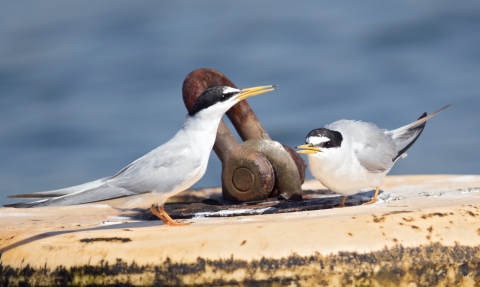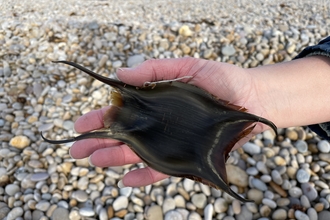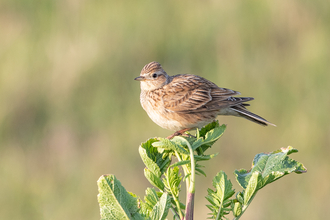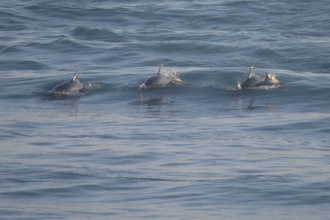
Little Terns at Chesil Beach © Paul Williams
Little Terns of Chesil Beach
Little Terns at Chesil Beach
These tiny birds, weighing less than a tennis ball, arrive in Dorset after an epic journey from West Africa in order to nest and raise their chicks on the huge pebble bank. However, little terns are the second rarest breeding sea bird in the UK, with less than 2000 breeding pairs. They struggle to raise their young – as ground nesters they are extremely vulnerable to predators, habitat loss and disturbance. The Chesil colony, which is the only one in the South West, dropped from 100 pairs of birds in 1997 to none at all in 2009. This led to the creation of the Chesil Little Tern Project, which helps to protect and nurture the colony.
One of the best way to see these highly protected birds without disturbing them is to join a guided walk or a daily trip on the Fleet Explorer in the summer months when there are often special tern watching trips running as well.
About Little Terns
The smallest UK tern, little terns are a fast flying graceful little bird with a black cap on their head and a yellow bill with a black tip. You can often hear them before you see them, flying overhead with a distinctive ‘creeking’ call. Little terns are master fishermen; riveting to watch as they expertly hover over the Fleet Lagoon before plunge diving with absolute precision to catch a small fish.
Shortly after arriving back in Dorset, the courtship process begins with an aerial display and males trying to entice females by offering them a small fish. The pair will then ‘prospect’ for a nest site – in reality just a dip in the pebbles - before laying two to three well camouflaged eggs. The chicks will hatch 18 – 22 days later, and grow quickly - within a few days, they are running around the beach and Fleet foreshore. Fledglings will stay on the beach near the colony and continue to be fed by their parents for several weeks as they practice and perfect their fishing and diving skills. In August, the whole colony will migrate south again.
Little terns are protected under Appendix 1 of the Wildlife & Countryside Act, and the species is on the Amber list.
Little Terns on Chesil Beach video (https://www.youtube.com/watch?time_continue=54&v=NcmzbImd-aM)
Little Terns on Chesil Beach video
Chesil Beach Little Tern Project
The crash in numbers of breeding birds led to the creation of the Chesil Beach Little Tern Project. This is a partnership project managed by the RSPB, supported by Dorset Wildlife Trust, Natural England, The Portland Court Leet, the Crown Estate and the Chesil Bank and Fleet Nature Reserve.
The project concentrates on protecting the colony from predators and reducing disturbance. Before the birds arrive, an electric fence is erected around the colony to keep out foxes and a hide is constructed. Wardens and volunteers monitor the birds around the clock and scare off avian predators, especially kestrels and gulls. They also keep track of the little terns' progress and behaviour.
In the early days, a high proportion of the eggs weren’t hatching, and it was suspected that this was due to chilling – Chesil Beach is very draughty! The wardens tried putting down sand patches to insulate the eggs and this dramatically increased hatching success. Installing sand patches is now a regular part of the project – the majority of birds select sand patches to nest on, and sand is placed under any that have nested straight on the pebbles.
Fence barriers for the little tern colony on Chesil Beach © DWT
Volunteering
Volunteers are essential for this project to succeed. If you would like to volunteer, please apply here or get in touch with chesil.tern@rspb.org.uk.






